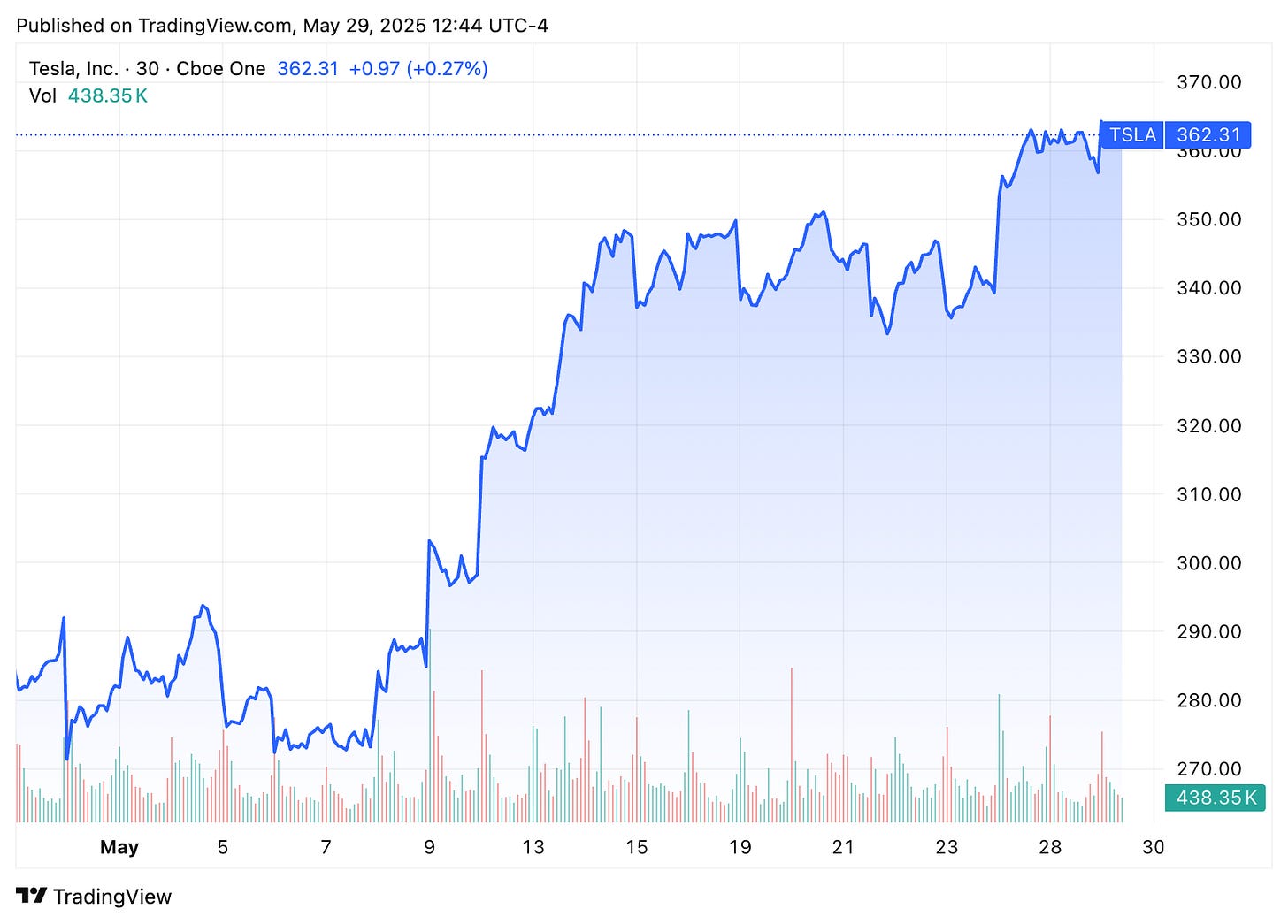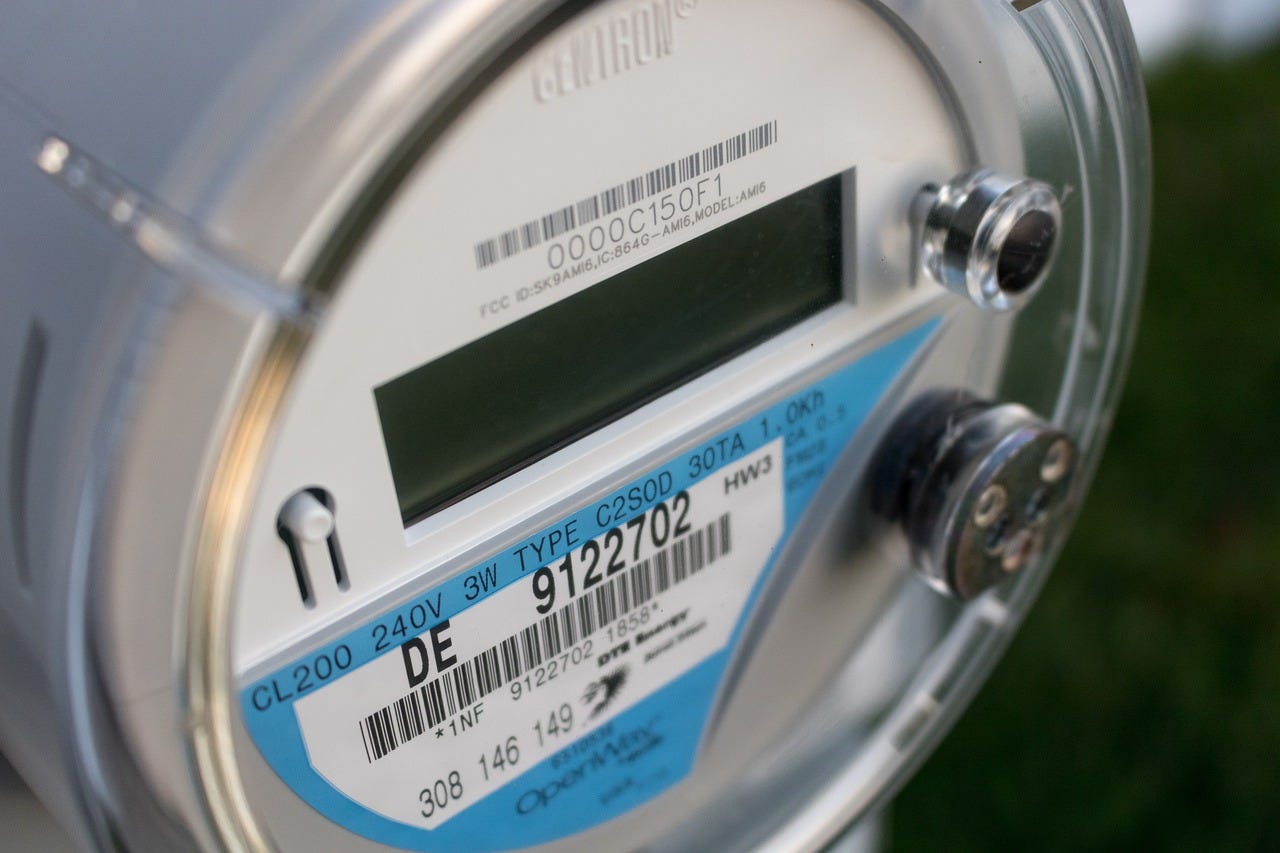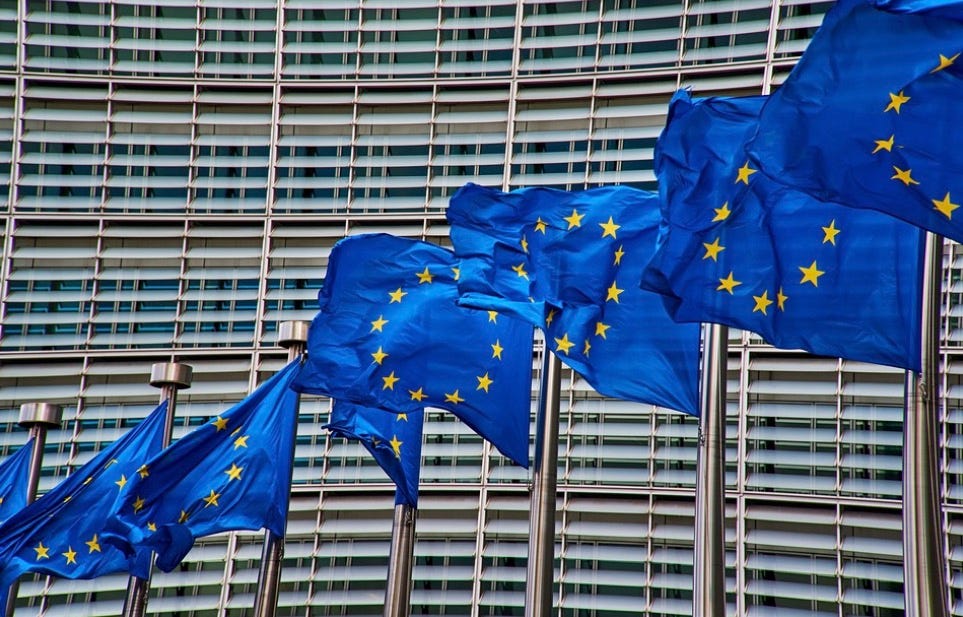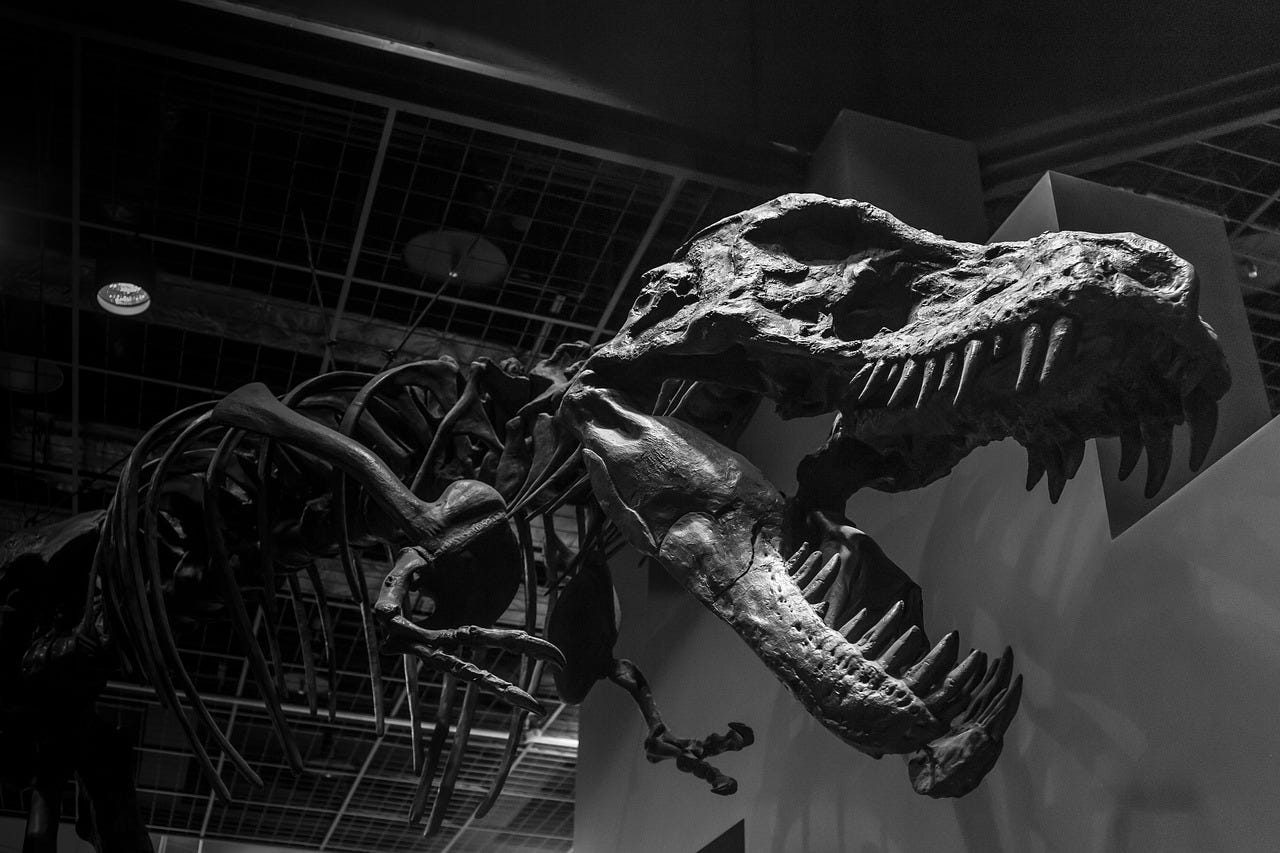Elon Musk's next act
Welcome to Callaway Climate Insights, your daily guide to global climate finance. Please enjoy and share with your colleagues.
Today’s edition of Callaway Climate Insights is free for all our readers. We really want to bring you the best and latest in climate finance from around the world. Please subscribe now.

Now that Elon Musk is officially slinking out of Washington and back to the media safety of the tech world from which he came, attention is quickly diverting to his next act — Tesla’s driverless robotaxis.
Musk has said he will have taxis on the roads in Austin, Texas by the end of June and this week Bloomberg reported that the current “go-live” date is June 12, just two weeks away. Musk said he hopes to have 10 or so robotaxis plying the streets of Austin shortly, followed by about a thousand.
Tesla TSLA 0.00%↑ shareholders are not waiting to find out. The stock started moving last month after Musk said he would leave the Trump administration and return to Tesla and SpaceX and rose again this week when he said goodbye to government — for now. Shares are up about 30% in the past month, though still down about 10% year-to-date after Musk’s brand-crushing performance at DOGE earlier this spring.
While Google’s GOOGL 0.00%↑ Waymo is already a few years ahead of Tesla in driverless taxis, with more than 1,500 autonomous vehicles operating in several cities, including about 300 in San Francisco. Some are already in Austin.
Tesla’s robotaxis and its shift to AI are seen by shareholders as a defining new era for the electric vehicle maker, and two strategies on which its future hangs. How Musk navigates the rollout this summer and articulates his plans for the company will determine whether he can save the brand or needs to move on to something else.
Tesla sales have tanked this year as Musk’s political profile dragged down the brand. Some buyers in California are finding second-hand Teslas for as little as $15,000 at used car dealerships. While sales will no doubt rebound somewhat, it’s really the new strategies that will spell the future for the company.
Tesla shareholders so far are giving Musk the benefit of the doubt. New customers will be another story all together.
Don’t forget to contact me directly if you have suggestions or ideas at dcallaway@callawayclimateinsights.com.
Follow us . . . .
Twitter | LinkedIn | Facebook | Instagram
The energy and water spent to ask ChatGPT just one question
. . . . Think twice the next time you ask AI to summarize that email you just received from Callaway Climate Insights. Few of AI’s most exuberant supporters are aware of just how much electricity and water it takes to power the usage of a product such as ChatGBT for just one frivolous question, writes Mark Hulbert. An inquisitive professor at the University of California ran the math and figured for just one question you’re wasting the equivalent of the entire water bottle on your desk. Imagine how much is used to bring AI systems to the level that consumers desire? Hulbert argues that the energy demands and demands for water to cool the AI data centers are being lost in the mad rush for more AI. Perhaps it’s time to add AI-shaming to the lexicon along with the Swedish “flight-shaming.”
Thursday’s subscriber insights
Backslapping in Brussels? Or backsliding?
. . . . A tough year for climate hawks in the European Union, including approval last week to delay implementation of the block’s carbon border tax by one year, was somewhat offset this week by an internal report that said by and large, the EU is still on track to reach the climate goals for 2030 that it set five years ago.
The report said the EU and its member states are on track to reach 54% of greenhouse gas emissions cuts by 2030 (from a base in 1990), which is just off the original target of 55%. It’s also on track to achieve a 41% market share for renewable energy, just below its target of 42.5%.
Backslapping all around in Brussels. But the report is backward looking and likely reflects most of the advancements made in 2021 and 2022 when the EU was more left-leaning and prone to passing strict climate legislation, much of which has now been delayed or repealed as costs and political opposition rises in member states.
Key to monitoring advancement toward the goals will be reports on performance last year and this year, as climate solutions have clearly slowed in the face of other priorities, including energy security and the rush to AI. Any significant backsliding will be harder to overcome in future years as time runs out.
Any sort of progress should be applauded. For years, the EU was the shining global example of government getting climate priorities correct. But China now wears that mantle and the Trump-led U.S. is nowhere to be found. How much member EU states can stick to their plan will be closely watched by investors, who have a lot at stake, and the rest of us, who have more.
Editor’s picks: Why cities burn; plus, Canadian wildfires rage
Watch the video: It’s wild how often cities used to burn down. So when fires ripped through Los Angeles at the start of 2025, PBS Terra asked, are urban firestorms back? In 1871, nearly a third of Chicago burned down. In 1889, 25 blocks of Seattle went up in flames. Modern buildings and firefighting solved the problem. So, how is this happening again? And why is it getting worse? To find out, reporters went to L.A. while the fires were still burning. The PBS Terra crew interviewed top fire officials and leading scientists to find out what went wrong in L.A.
Canadian wildfires force thousands to evacuate
More than 17,000 residents of Manitoba are under evacuation orders as large wildfires burn out of control in the north and east regions of the Canadian province. The New York Times reported Manitoba Premier Wab Kinew told residents at a news conference Wednesday night to heed official warnings, urging them to head toward urban areas like Winnipeg, where temporary housing and emergency assistance were being provided. The report quoted Kinew as saying, “This is the largest evacuation that Manitoba will have seen in most people’s living memory.” As of Wednesday, 22 fires were burning in the province, 11 of them still out of control.
Latest findings: New research, studies and projects
Central Banks and Climate Change
This section of “Making the Financial System Sustainable” considers how central banks can play an important role in mitigating the risks from environmentally unsustainable economic activity, particularly that which contributes to climate change. The authors argue that the potential consequences of climate change for the economy and especially the financial sector mean that it falls squarely within the existing mandates of central banks and their primary objectives. From the abstract: “As fiscal and political authorities, governments are uniquely situated to take the lead in mitigating climate change risks, for they control legislation, taxation and expenditure programmes… However, the main agents for implementing governmental policies are in the private sector which generate most of the risks and have the greatest potential for managing them.” Authors: Kern Alexander, University of Zurich - Rechtswissenschaftliches Institut (School of Law), EUSFIL, Jean Monnet Centre of Excellence; and Paul Fisher, Bank of England.
More of the latest research:
Words to live by . . . .
“It’s not too late for us to take the actions to keep warming below 1.5°C. The obstacles at this point aren’t physical, they are not technological, they are entirely political. And political obstacles can be overcome.” — Michael Mann, scientist and climate expert.






I don't believe San Francisco is gaga over Waymo. We saw one on a visit to the Aquarium on Tuesday, and it looked like the whole street was cringing, even us, in a Chevy Bolt. Also, who with a college education from a place like Berkeley, thinks AI is useful? It can't spell, and if you speed read, you certainly don't need it to summarize anything.